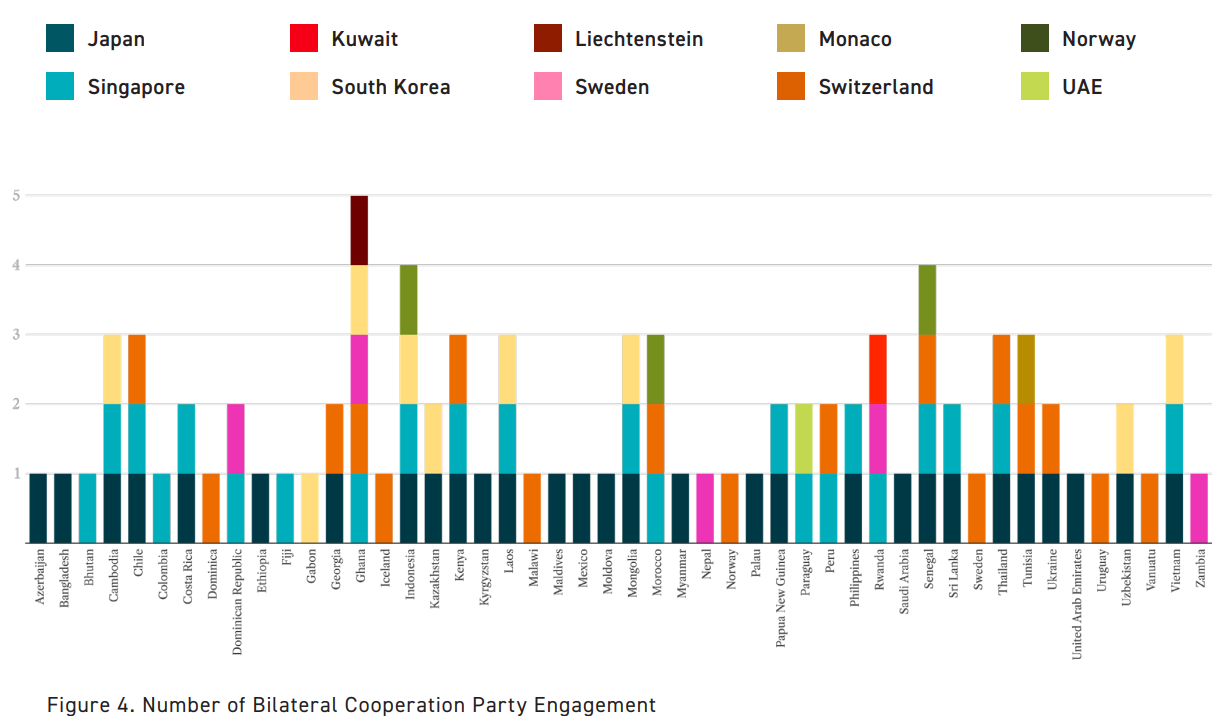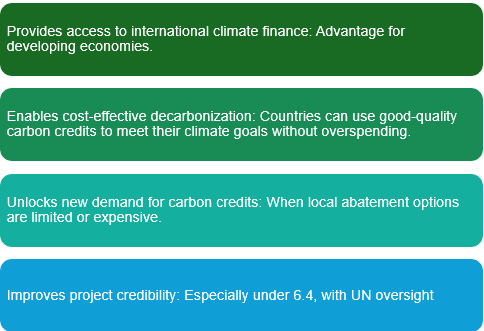Article 6 of the Paris Agreement provides a framework for countries to cooperate on climate action, enabling joint efforts to cut emissions while channelling finance and support to developing and least-developed nations.
Here’s the basic idea:
One (host) country can support a low-carbon project in another country and count the resulting emission reductions toward its own climate goals.
To avoid double-counting, the host country performs a "corresponding adjustment" — a formal accounting step to ensure only the buyer gets credit for the reduction.
For Example:
Singapore supports a household biodigester project in Bhutan. These biodigesters replace firewood and kerosene with clean biogas for cooking, apart from avoiding methane emissions and cutting about 1,000 tonnes of CO₂ emissions.
Singapore then counts these reductions towards its own climate target.
To prevent both countries from claiming the same reduction, Bhutan makes a “corresponding adjustment” by adding 1,000 tonnes to its own emissions— ensuring that only Singapore gets the carbon credit.
The Two Pathways: Article 6.2 & Article 6.4
Article 6 is divided into two key mechanisms. Both help reduce emissions through international cooperation — but they work differently.
| Aspect | Article 6.2 | Article 6.4 |
|---|---|---|
Definition | A bilateral agreement that allows two countries to trade emission reductions, called Internationally Transferred Mitigation Outcomes (ITMOs), which the buyer can apply toward its Nationally Determined Contributions (NDCs). | Established under the UNFCCC, this multilateral mechanism validates climate projects and issues carbon credits (A6.4ERs). Subject to host country authorization and corresponding adjustments, these credits can be transferred and counted toward the purchasing country’s NDC. |
Rules & Methodologies | Countries choose to develop their own | Must adhere to methodologies and standards approved under the UNFCCC mechanism. |
Transparency | Countries must report under Enhanced Transparency Framework- a UN led reporting framework | Public project registry managed by the UN |
Bilateral Cooperation between Parties
The chart highlights how buyer countries such as Japan, Switzerland, and Singapore are building partnerships with a diverse set of host nations under Article 6.2.

Source: UNEP CCC Article 6 Pipeline
Strategic Advantages of Participating in Article 6 Mechanisms

As global carbon markets take shape, Article 6 has emerged as a powerful framework for credible, high-integrity climate action. In our next insight, we’ll explore what truly qualifies a project as a carbon project.
